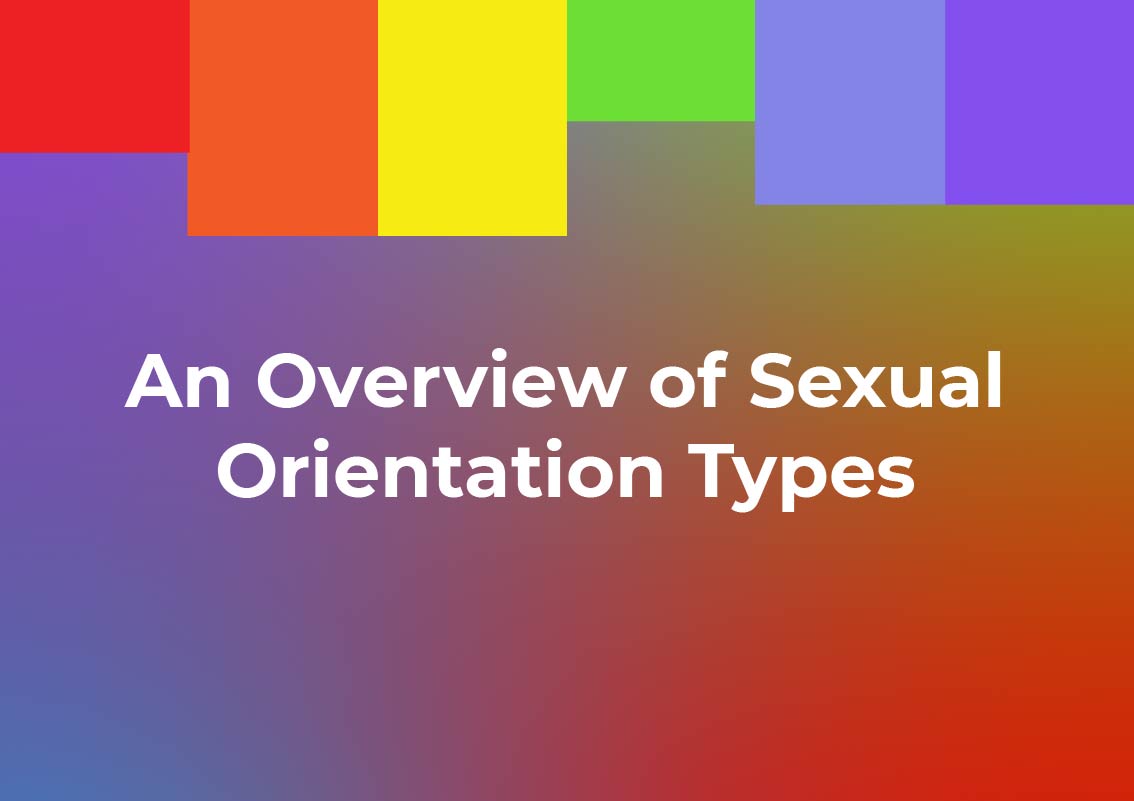Sexual Orientation Explained: A Guide for Teens
[vc_row][vc_column][vc_column_text]For parents of teens, conversations about sexuality and sexual orientation can be challenging. You want to use the appropriate language when helping your teen navigate these topics while encouraging them to be smart and safe about the activities they engage in. Understanding the different types of sexual orientations and their definitions can be helpful for both teens and parents before starting the discussion. Learn more about the different types of sexual orientations from the team at Ascend today.
Understanding Sexual Orientation
As teens grow and mature, they may suddenly find themselves flooded with hormones, emotions, and urges that feel strange and unfamiliar. Navigating the waters of sexuality and sexual orientation can be confusing and difficult – especially for teens who don’t feel like they fit in with the mainstream crowd. A few important things to note about sexual orientation include:
- A person’s sexual orientation can be fluid and change throughout their life. Although some people know what their sexual orientation is very early on in life, others may not discover or understand it until much later.
- Teens can discover their sexual orientation without being sexually active. If your teen broaches the conversation about who they’re attracted to, they’re not necessarily engaging in sexual activities.
- It’s not possible to change someone’s sexual orientation. Affirming your teen’s choices, including sexual orientation and gender identity, through the use of their preferred pronouns can help them feel supported.
- It’s helpful to give teens space to explore and discover their own sexual orientation as they grow, just as you would with their gender identity.
Gender Identity & Sexual Orientation
While sexual orientation defines the types of people you find attractive emotionally, romantically, or sexually, gender identity refers to your innermost concept of self as a specific gender. Some teens find themselves identifying with the same gender they were assigned at birth, while others find that they feel like they are something other than their born gender. Any struggle in understanding who they are can lead to gender dysphoria.[/vc_column_text][/vc_column][/vc_row][vc_row][vc_column][vc_raw_html]JTNDZGl2JTIwY2xhc3MlM0QlMjJwaWt0b3dyYXBwZXItZW1iZWQlMjIlMjBzdHlsZSUzRCUyMmhlaWdodCUzQSUyMDMwMHB4JTNCJTIwcG9zaXRpb24lM0ElMjByZWxhdGl2ZSUzQiUyMiUyMGRhdGEtdWlkJTNEJTIyNTc4NzAxMTQtYXNjZW5kLWhlYWx0aGNhcmUtc2V4dWFsLW9yaWVudGF0aW9uLXR5cGVzJTIyJTNFJTNDZGl2JTIwY2xhc3MlM0QlMjJwaWt0by1jYW52YXMtd3JhcCUyMiUzRSUzQ2RpdiUyMGNsYXNzJTNEJTIycGlrdG8tY2FudmFzJTIyJTNFJTNDZGl2JTIwY2xhc3MlM0QlMjJlbWJlZC1sb2FkaW5nLW92ZXJsYXklMjIlMjBzdHlsZSUzRCUyMndpZHRoJTNBJTIwMTAwJTI1JTNCJTIwaGVpZ2h0JTNBJTIwMTAwJTI1JTNCJTIwcG9zaXRpb24lM0ElMjBhYnNvbHV0ZSUzQiUyMHRleHQtYWxpZ24lM0ElMjBjZW50ZXIlM0IlMjIlM0UlM0NpbWclMjB3aWR0aCUzRCUyMjYwcHglMjIlMjBhbHQlM0QlMjJMb2FkaW5nLi4uJTIyJTIwc3R5bGUlM0QlMjJtYXJnaW4tdG9wJTNBJTIwMTAwcHglMjIlMjBzcmMlM0QlMjJodHRwcyUzQSUyRiUyRmNyZWF0ZS5waWt0b2NoYXJ0LmNvbSUyRmxvYWRpbmcuZ2lmJTIyJTJGJTNFJTNDcCUyMHN0eWxlJTNEJTIybWFyZ2luJTNBJTIwMCUzQiUyMHBhZGRpbmclM0ElMjAwJTNCJTIwZm9udC1mYW1pbHklM0ElMjBMYXRvJTJDJTIwSGVsdmV0aWNhJTJDJTIwQXJpYWwlMkMlMjBzYW5zLXNlcmlmJTNCJTIwZm9udC13ZWlnaHQlM0ElMjA2MDAlM0IlMjBmb250LXNpemUlM0ElMjAxNnB4JTIyJTNFTG9hZGluZy4uLiUzQyUyRnAlM0UlM0MlMkZkaXYlM0UlM0MlMkZkaXYlM0UlM0MlMkZkaXYlM0UlM0MlMkZkaXYlM0UlM0NzY3JpcHQlM0UlMjhmdW5jdGlvbiUyOGQlMjklN0J2YXIlMjBqcyUyQyUyMGlkJTNEJTIycGlrdG8tZW1iZWQtanMlMjIlMkMlMjByZWYlM0RkLmdldEVsZW1lbnRzQnlUYWdOYW1lJTI4JTIyc2NyaXB0JTIyJTI5JTVCMCU1RCUzQmlmJTIwJTI4ZC5nZXRFbGVtZW50QnlJZCUyOGlkJTI5JTI5JTIwJTdCJTIwcmV0dXJuJTNCJTdEanMlM0RkLmNyZWF0ZUVsZW1lbnQlMjglMjJzY3JpcHQlMjIlMjklM0IlMjBqcy5pZCUzRGlkJTNCJTIwanMuYXN5bmMlM0R0cnVlJTNCanMuc3JjJTNEJTIyaHR0cHMlM0ElMkYlMkZjcmVhdGUucGlrdG9jaGFydC5jb20lMkZhc3NldHMlMkZlbWJlZGRpbmclMkZlbWJlZC5qcyUyMiUzQnJlZi5wYXJlbnROb2RlLmluc2VydEJlZm9yZSUyOGpzJTJDJTIwcmVmJTI5JTNCJTdEJTI4ZG9jdW1lbnQlMjklMjklM0IlM0MlMkZzY3JpcHQlM0U=[/vc_raw_html][/vc_column][/vc_row][vc_row][vc_column][vc_column_text]
Different Sexual Orientation Types
Learning about a few of the most common sexual orientation types can help you talk more clearly and openly with those in your life about who they are and what they want in a partner. Here are some of the most common types of sexual orientation your teen may be exploring:
Heterosexual
Heterosexual, also known colloquially as straight, is a term that describes those that are attracted to the opposite sex. Cisgender individuals (those that identify with their born gender) and transgender individuals (those that transition to a gender different from their birth sex) can both identify as heterosexual.
Gay
While homosexual is a technical term, many people see it as a formal and outdated way to describe people who are attracted to the same or similar gender as themselves. Usually, gay has a masculine connotation, but some women choose to use this term, as well.
Lesbian
The term lesbian refers to the feminine version of homosexuality. It’s used to identify two women who are attracted to each other. If you have a teen who transitioned from male to female but still prefers females romantically, they are considered lesbian.
Bisexual
This type of sexual orientation describes people who are attracted to more than one gender. Some people also refer to bisexuality as pansexuality, as it denotes an attraction to a broader spectrum of sexual orientation than just the two stereotypical genders.
Asexual
Asexual people are not sexually attracted to anyone. Although they may experience romantic attractions to any gender, they’re not interested in getting physical in the more traditional sense.
Queer
The term queer used to be derogatory, a slur used against anyone different, meaning weird and bizarre, but the LGBTQ+ community has adopted and transformed the word to create an umbrella term that encompasses everyone who isn’t exclusively cisgender or heterosexual.
Demisexual
This sexual orientation type often falls along the spectrum of asexuality. Most of the time, demisexual individuals only feel a sexual bond towards another person after they’ve established an emotional or romantic connection.
Pansexual
People who identify as pansexual prefer not to limit their romantic or sexual attraction to others in any way. They don’t feel defined by specific gender identities or sexual orientations.
Whether your loved ones are gay, lesbian, pansexual, heterosexual, or something else, learning the proper terminology can ensure that you’re better equipped to support them.
Find Inclusive Mental Health Support for Teens at Ascend
Teens who are part of the LGBTQ+ community deserve to receive mental health support from an inclusive, welcoming provider. At Ascend, you’ll find help for gender dysphoria and associated mental health concerns like depression, anxiety, or substance use disorders. As a safe, supportive space for teens of all genders and sexual orientations, we’re here to help our clients and their families thrive.
If you think you or a loved one may find the guidance they need at Ascend, reach out to our admissions team at 310.388.3713 today.[/vc_column_text][/vc_column][/vc_row][vc_row type=”vc_default” disable_element=”yes”][vc_column][vc_column_text]For parents of teens, conversations about sexuality and sexual orientation can be challenging. You want to use the appropriate language when helping your teen navigate these topics while encouraging them to be smart and safe about the activities they engage in. Understanding the different types of sexual orientations and their definitions can be helpful for both teens and parents before starting the discussion. Learn more about the different types of sexual orientations from the team at Ascend today.
Understanding Sexual Orientation
As teens grow and mature, they may suddenly find themselves flooded with hormones, emotions, and urges that feel strange and unfamiliar. Navigating the waters of sexuality and sexual orientation can be confusing and difficult – especially for teens who don’t feel like they fit in with the mainstream crowd. A few important things to note about sexual orientation include:
- A person’s sexual orientation can be fluid and change throughout their life. Although some people know what their sexual orientation is very early on in life, others may not discover or understand it until much later.
- Teens can discover their sexual orientation without being sexually active. If your teen broaches the conversation about who they’re attracted to, they’re not necessarily engaging in sexual activities.
- It’s not possible to change someone’s sexual orientation. Affirming your teen’s choices, including sexual orientation and gender identity, through the use of their preferred pronouns can help them feel supported.
- It’s helpful to give teens space to explore and discover their own sexual orientation as they grow, just as you would with their gender identity.
Gender Identity & Sexual Orientation
While sexual orientation defines the types of people you find attractive emotionally, romantically, or sexually, gender identity refers to your innermost concept of self as a specific gender. Some teens find themselves identifying with the same gender they were assigned at birth, while others find that they feel like they are something other than their born gender. Any struggle in understanding who they are can lead to gender dysphoria.
Different Sexual Orientation Types
Learning about a few of the most common sexual orientation types can help you talk more clearly and openly with those in your life about who they are and what they want in a partner. Here are some of the most common types of sexual orientation your teen may be exploring:
Heterosexual
Heterosexual, also known colloquially as straight, is a term that describes those that are attracted to the opposite sex. Cisgender individuals (those that identify with their born gender) and transgender individuals (those that transition to a gender different from their birth sex) can both identify as heterosexual.
Gay
While homosexual is a technical term, many people see it as a formal and outdated way to describe people who are attracted to the same or similar gender as themselves. Usually, gay has a masculine connotation, but some women choose to use this term, as well.
Lesbian
The term lesbian refers to the feminine version of homosexuality. It’s used to identify two women who are attracted to each other. If you have a teen who transitioned from male to female but still prefers females romantically, they are considered lesbian.
Bisexual
This type of sexual orientation describes people who are attracted to more than one gender. Some people also refer to bisexuality as pansexuality, as it denotes an attraction to a broader spectrum of sexual orientation than just the two stereotypical genders.
Asexual
Asexual people are not sexually attracted to anyone. Although they may experience romantic attractions to any gender, they’re not interested in getting physical in the more traditional sense.
Queer
The term queer used to be derogatory, a slur used against anyone different, meaning weird and bizarre, but the LGBTQ+ community has adopted and transformed the word to create an umbrella term that encompasses everyone who isn’t exclusively cisgender or heterosexual.
Demisexual
This sexual orientation type often falls along the spectrum of asexuality. Most of the time, demisexual individuals only feel a sexual bond towards another person after they’ve established an emotional or romantic connection.
Pansexual
People who identify as pansexual prefer not to limit their romantic or sexual attraction to others in any way. They don’t feel defined by specific gender identities or sexual orientations.
Whether your loved ones are gay, lesbian, pansexual, heterosexual, or something else, learning the proper terminology can ensure that you’re better equipped to support them.
Find Inclusive Mental Health Support for Teens at Ascend
Teens who are part of the LGBTQ+ community deserve to receive mental health support from an inclusive, welcoming provider. At Ascend, you’ll find help for gender dysphoria and associated mental health concerns like depression, anxiety, or substance use disorders. As a safe, supportive space for teens of all genders and sexual orientations, we’re here to help our clients and their families thrive.
If you think you or a loved one may find the guidance they need at Ascend, reach out to our admissions team at 310.388.3713 today.[/vc_column_text][/vc_column][/vc_row]



